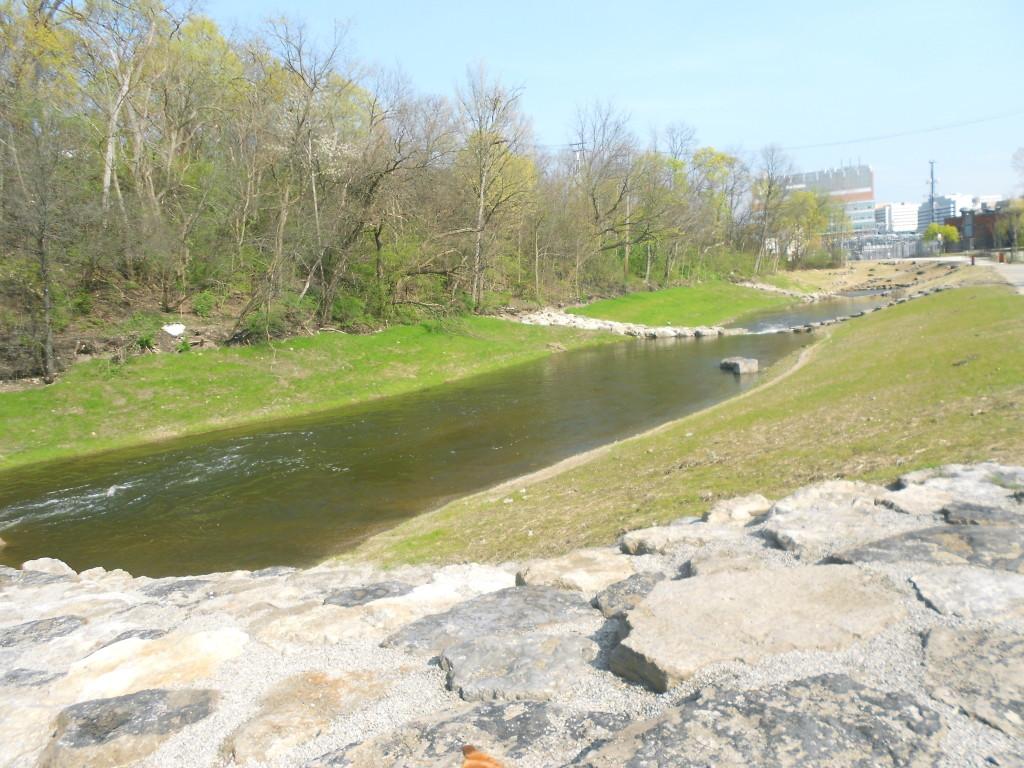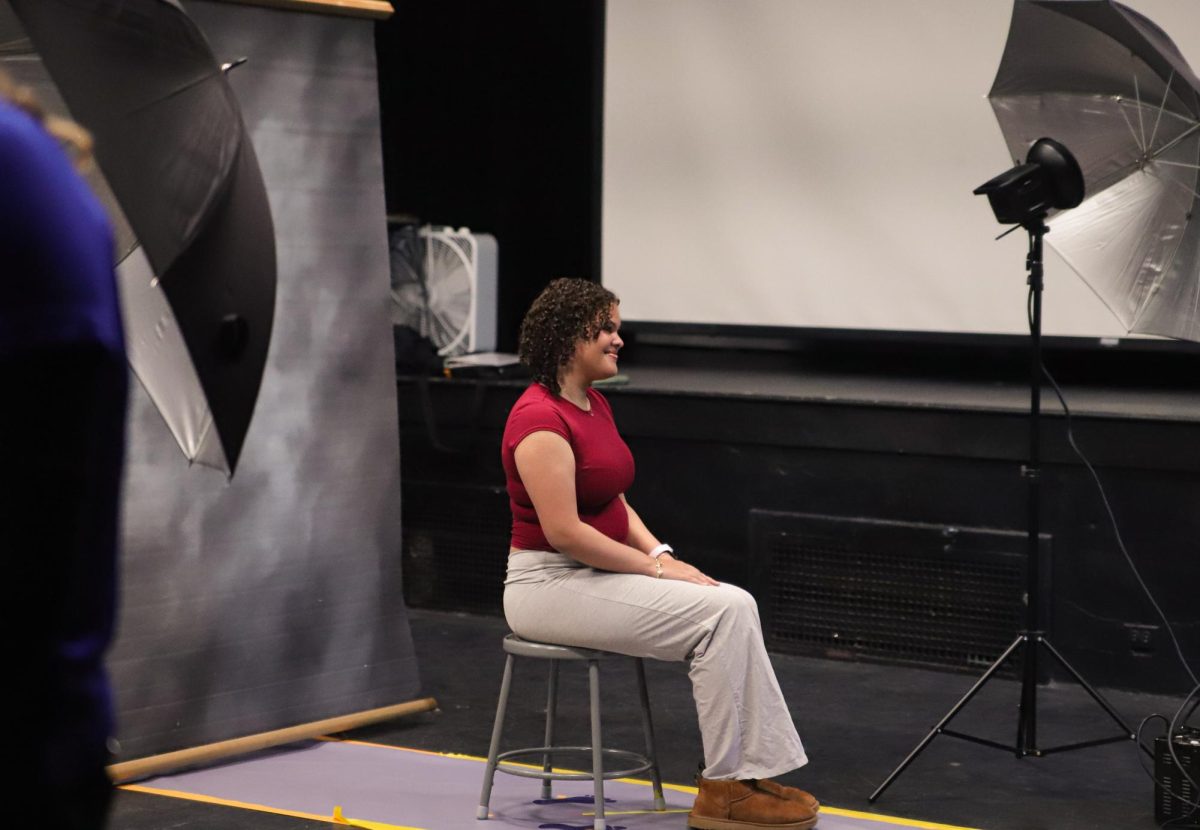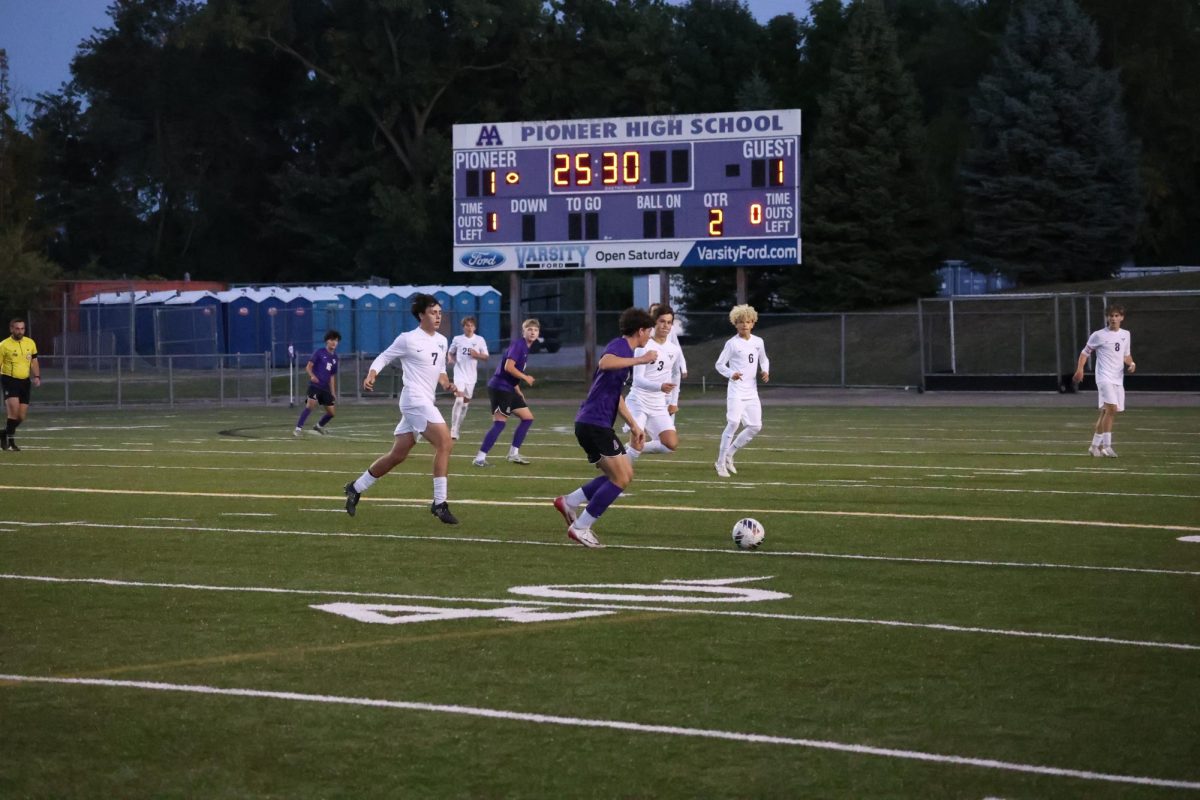Ann Arbor’s Argo Pond has long been a site of controversy. While rowing crews depend on the pond for a place to practice, and while it provides a scenic place for recreation, everything about it is unnatural.

The pond only exists because Argo Dam gives the water nowhere else to go. That changed recently with the installation of the Argo Raceway, a series of small ponds and rapids that allow boaters to make their way around the dam without having to lift their boats out of the water. Also known as a portage, this maneuver can be difficult for people who are new to canoeing and kayaking.
“The portage was awful,” said Courtney Kiley, FOS teacher at Community High. “If you’re trying to portage with little kids or big boats, and down a steep staircase — which they had — it can be really treacherous. So I think this could be better.” Kiley went on to add, “But from what I hear, when the water levels are high, this new pass also can be awful.”
“The raceway certainly works for what it was designed to be,” said Harold Kirchen, a whitewater enthusiast and canoer. “The channel takes a very, very, small portion of the flow of the river, and divvies it up into a series of a half-dozen small drops between quiet-water pools. The drops between these pools are formed from concrete, which has been poorly disguised by the addition of a large quantity of natural rock. From afar, it looks great. But close up, it looks very man-made, and not particularly attractive to me. The ‘Argo Cascades’ don’t even attempt to provide the tiniest hint of a whitewater learning experience — they are simply what they were designed to be, a portage-free bypass for novice paddlers around the Argo Dam.”

Oliver Kiley, Courtney Kiley’s husband and a fellow scientist, feels that the Argo Raceway is a fairly good compromise. “The dam was not removed primarily because of the community’s desire to maintain the Argo Pond impoundment…given that need, the [Raceway] helps connect the river above and below the dam better for people as well as aquatic organisms.”
While the Raceway is certainly a step in the right direction, it didn’t solve all of the problems surrounding Argo. “I think the people who didn’t really get their needs met were the Huron River Watershed Council, and the environmentalists and ecologists and Trout Unlimited, who would really like to see the river restored somewhat to its natural form,” said Courtney Kiley. “All of the wetlands and stuff that were once there are now underwater. The water’s still a lot warmer up above the dam, where it’s pooled in a big pond, and… it’s not natural. And really the only reason why that dam is there is to keep the pond there. It doesn’t serve any electrical purposes. There’s no fish ladder for the fish to swim up the river, and the fish aren’t going to swim up [the Raceway]. It’s just not something that they would do.”
Fish ladders and high water temperatures aren’t the only issues of concern around Argo. Near the DTE energy plant, a little farther down the river, the soil and groundwater are contaminated with pollutants called non-aqueous-phase liquids. Also called NAPLs, these substances are leftover from when the energy plant created manufactured oil from coal in the early 1900s. When the plant closed in the 1940s, tar-like by-products were stored in large containers that were then buried. Now, more than 50 years later, some of these containers have developed leaks, allowing pollutants to seep out into the riverbank.

The city is planning a cleanup effort that will take place between August and October of 2012, during the river’s driest season. The buried containers of pollutants will be taken out, and much of the contaminated riverbank soil will be removed. The riverbank will later be reconstructed and replanted with native plants. There are also plans to install a “cap” — a kind of pipe that would work to filter NAPLs out of the water.
With decades-old pollutants in the soil and groundwater of the area, there is still a lot of work that needs to be done around Argo. Both Oliver Kiley and Kirchen agreed that the Raceway is only a temporary solution to a much larger problem. “One concern is that the pond is getting heavy sediment in it,” said Oliver Kiley. “Weed management is becoming a significant challenge… So in the long run Argo Pond will need to be drawn down and dredged, at a pretty high expense. That will be another opportunity to consider different options in the future.”
“I wish that the dam had been taken out instead, exposing the free-flowing river that was there 150 years ago or so,” said Kirchen. “That fight has already been fought, though, and now, especially after spending $1.17 million on the ‘Argo Cascades,’ that is not going to happen, at least in the lifetimes of those who made this decision. That subject is now ‘water over the dam,’ so to speak, although I sure wish it was ‘water under the bridge,’ instead!”

Courtney Kiley summed up her feelings about the dilemma by saying, “Really, Ann Arbor has this gorgeous river running through it, and if you go to any other cities that have a river like that, there are recreation activities and restaurants and stuff along the river to bring people to it. But we really underutilize that feature…So I think in the future it could be really cool — if it’s not returned to a wild river, to at least make it some place that would draw people to it.”

















